How African music became American music
At 2 p.m. Feb. 3, I met John Fleming, his sister, and Ruby Miller, at the American Museum of Science and Energy. It was my privilege to provide a tour to acquaint our speaker for the evening with aspects of Oak Ridge that he might not have known previously. In addition to AMSE, we spent a couple of hours touring and talking about our history. One of our other stops was the Scarboro Community Center for the excellent display there of African American history in Oak Ridge.
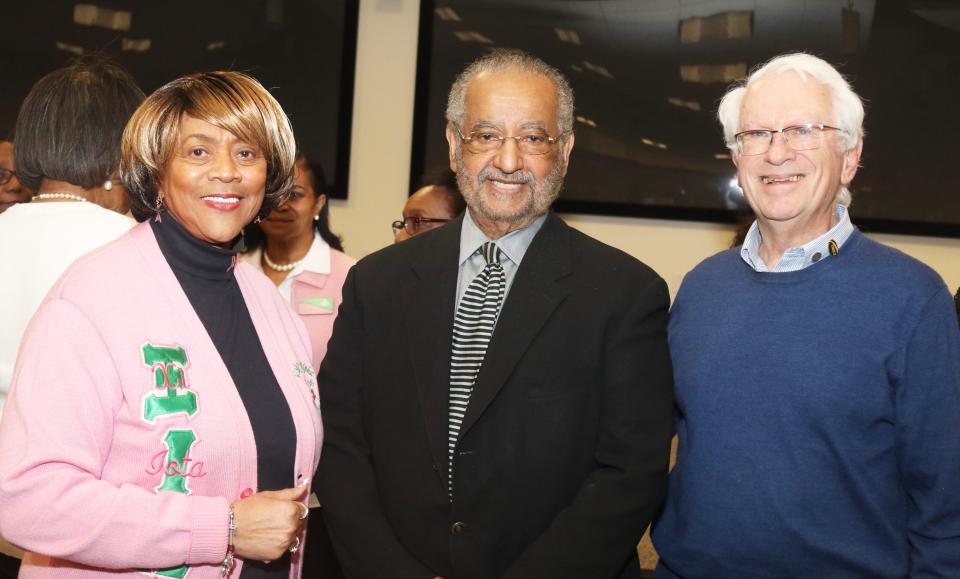
I was pleased to see Carolyn Krause in attendance at the "Roots of America" event that evening. She has graciously provided a review of the talk Fleming gave regarding the history of African American music and its influence on our gospel music and other forms of American music as well, thus influencing our culture. Enjoy the review:
***
After singing “Lift Every Voice and Sing,” known as the Black national anthem, a large multi-racial audience in the Y-12 New Hope Center last Friday heard an uplifting talk about the evolution of Black American music from its African roots and its impact on American culture, especially after Southern Blacks moved north and west in the Great Migration (1910-70).
“African American music is American music,” said John Fleming, noting that much of this music is popular internationally. He is the immediate past director of the National African American Music Museum in Nashville. His talk was a fitting kickoff for Black History Month in Oak Ridge, as well as the first event in the new cultural exploration series called “Roots of America.”
The series, hosted by the partnership of the Oak Ridge Institute for Continued Learning and the Oak Ridge Breakfast Rotary Club, will feature future monthly lectures on Native Americans in East Tennessee, hate crimes against various ethnic groups and immigration issues. (These events will be held in the Oak Ridge Associated Universities Pollard Technology Conference Center Auditorium on March 9, April 20, and May 23, beginning with a reception at 5 p.m. and the program at 5:30 p.m. – Ray)
Fleming focused on the history of gospel music, as well as the influence of this Black music form on other genres and on white religious music. With the help of two films, he also conveyed Black music history and promoted the museum, which flourishes in the Music City. Nashville, he noted, annually attracts more than 2 million visitors from overseas.
Residents of Nashville, he added, better understand why the National African American Music Museum is located there, thanks to the Ken Burns’ series of PBS videos on country music.
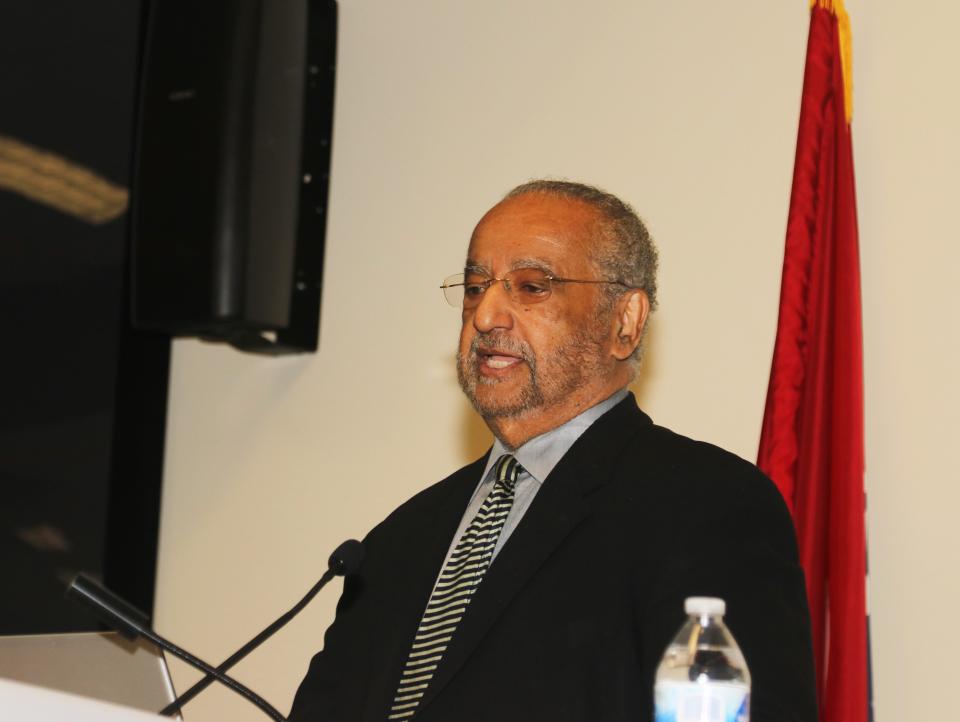
“In doing our research, we found out that African Americans made a major contribution to country music,” Fleming said, adding that the PBS series provides musical evidence of this finding.
The museum, 510 Broadway, has seven films, 17 interactive exhibits in galleries, and a 360-degree theater in which visitors enjoy performances. You can witness, for example, the late Marian Anderson as she stood before the Lincoln Memorial after being denied the opportunity to sing at Constitution Hall in Washington, D.C. First Lady Eleanor Roosevelt arranged with the National Park Service for Anderson to sing Easter Sunday in front of the Lincoln Memorial.
The first museum film Fleming showed started off with a recording of “Wade in the Water,” a song with a coded message that Harriet Tubman and others used to warn enslaved Blacks trying to escape to leave the trail for the water to prevent slaveowners’ dogs from finding them.
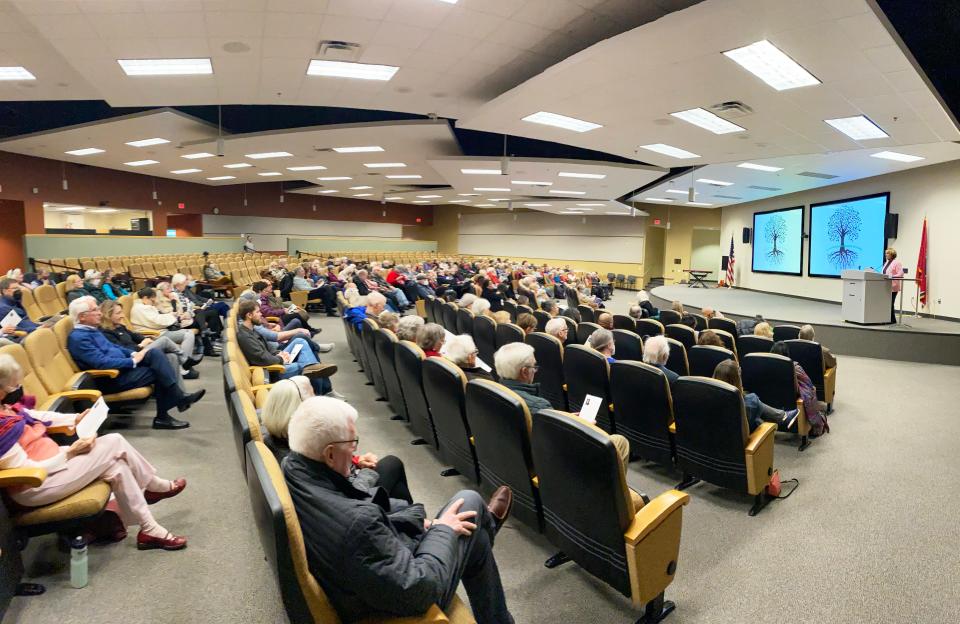
“Black music is deeply rooted in African musical and cultural traditions,” Fleming said. “It was influenced and shaped by the Black experience in America and finally has become American and world music.”
The music: From slavery to the Civil Rights Movement
Fleming focused mostly on gospel music, one of five native genres of African American music; the others are blues, jazz, rhythm and blues (R&B) and hip-hop music (including rap and breakdancing), which has existed for 50 years.Enslaved American Black people, he said, kept up the African traditions of music and dance and built African instruments, such as kalimbas, banjos and drums.
“Early white historians believed that Africans arrived in the Americas without culture,” Fleming said. “We now know that they brought with them a rich cultural heritage that would become central to the development of American culture.
“During the early colonial period, even though Africans were both forced and encouraged to convert to Christianity, they still practiced their religion in the absence of their slaveholders. After working hard all day, these Africans would go into the woods surrounded by brush and large vessels used to contain the sounds they would make during their secret services. While enslaved, Africans preferred to practice their own religious tradition.”
From the film and Fleming, the audience learned that Black religious music morphed into gospel music in the early 20th century, thanks partly to William Seymour, an African-American holiness preacher who initiated the Azusa Street Revival in Los Angeles, prompting the rise of the Pentecostal and Charismatic movements. Seymour made central to worship the early form of gospel music that blended spirituals with emerging blues, ragtime and jazz music.
Another important African American in gospel music history was the Rev. Charles A. Tindley, born to a slave father in 1855. As his congregation grew to 500 times its original size by 1924, he created gospel hymns. He composed and copyrighted scores of original gospel songs, including “Stand by Me” and most notably the 1901 hymn “I’ll Overcome Some Day.” This song was famously adopted by the Civil Rights Movement in the 1960s as the anthem “We Shall Overcome.”
Thomas Dorsey: 'Precious Lord, Take My Hand'
Thomas Dorsey came to be known as the father of gospel music in written form. In the late 1920s, he began composing religious tunes, selling sheet music of his gospel songs to churches in Chicago and throughout the nation.
“Blending blues and jazz with religious lyrics and themes, Dorsey’s songs began to draw notice and eventually Dorsey left writing his earlier music to concentrate on gospel,” Fleming said. “First recorded in 1937, his ‘Precious Lord, Take My Hand,’ written after the death of his wife and baby, sold millions of copies throughout the years and was recognized by Martin Luther King as his favorite gospel song. Over the course of a half century, Dorsey authored nearly 1,000 gospel tunes including the all-time favorite ‘There Be Peace in the Valley.’”
The rise of radio and the recording industry enhanced the promotion of gospel music, and its performance grew in African-American worship services and homes throughout the country. In 1968 when soul radio stations aired “O Happy Day,” gospel music made its entry into popular culture.
The migration from the South to the North, Midwest, and West Coast
The second museum video described the Great Migration this way: “Between World War I and the 1970s, 6 million African Americans moved from the South to urban areas throughout the North, Midwest, and West Coast. The Great Migration transformed the American economy, politics and culture. World Wars I and II brought increased opportunity for jobs in urban areas, and wartime factory jobs presented a desirable alternative to sharecropping in the South.
“White terrorism in the Jim Crow South crushed the lives of African Americans. Leaving the South, the only home that they had ever known, was a wrenching decision,” but it made the courageous Black migrants feel more dignified, independent and self-confident.
However, they learned that racism and segregation in housing and schools permeated all American society. “Music was essential to coping and adapting,” stated the film. “The music they brought that developed in the Deep South held people together in shared culture.
“During migration, African Americans from the South interacted for the first time with many other cultural movements such as those from the Caribbean, leading to new types of creativity. Advancements in technology such as the amplification of instruments and voices led to new musical forms. New systems of broadcast and distribution helped the music to spread across the nation. More people were being exposed to African American music, including Black people outside of the South, white people throughout the country and eventually audiences in Europe and Asia.
“The first recordings of jazz by African American musicians occurred in New York in 1916 in Los Angeles in 1922. Soon jazz spread into popular culture. Religious music moved into the cities and new forms were greatly influenced by the Pentecostal Holiness Movement in the sanctified tradition. Around World War II, traditional blues transformed into urban blues in conjunction with blues musicians relocating into the urban North, and in their new environment, blues musicians began making studio recordings of this new blue style. The Great Migration went on to inspire the development of R&B, rock ‘n’ roll, soul and hip-hop music.”
“As with the rhythm and blues vocal groups who had drawn on stylistic elements of gospel before the end of the 1960s and 1970s, numerous soul music performances reflected backgrounds steeped in the music of the church in which they had been raised,” Fleming said. “Chief among them are figures such as Chicago’s Curtis Mayfield and Detroit’s Aretha Franklin and Philadelphia’s Patti LaBelle. Louis Armstrong came out of New Orleans and went north as part of the Great Migration, which greatly influenced the musical tradition of the country.”
On Thursday, March 9, at 5 p.m. at the Pollard Technology Conference Center of Oak Ridge Associated Universities, 210 Badger Ave., Lavita Hill, a Cherokee, will speak on the proposal approved by the Eastern Band of Cherokee Tribal Council to change the name of Clingmans Dome to Kuwohi. This peak in the Great Smoky Mountains National Park was named in 1859 after North Carolina senator and Confederate brigadier general Thomas Lanier Clingman. It will the second of four free “Roots of America” talks that explore the achievements and challenges of various American ethnic groups.
***
Thank you Carolyn for your usual excellent review of events in Oak Ridge. This event was truly enlightening for the large crowd and entertaining, as well. I must now visit the 56,000 square-foot National Museum of African American Music located at Fifth and Broadway (510 Broadway) in downtown Nashville.
One of the many things I enjoy about being the Oak Ridge city historian is the amazing people I get to met and provide tours of our city’s history. Dr. Fleming is certainly one amazing individual.
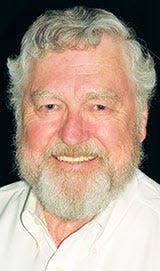
D. Ray Smith is the Oak Ridge city historian and longtime "Historically Speaking" columnist for The Oak Ridger.
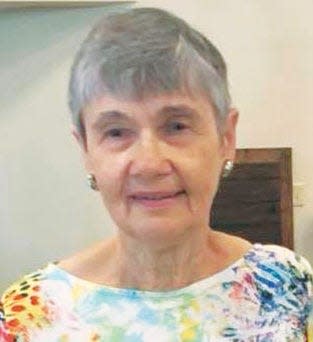
This article originally appeared on Oakridger: How African music became American music

